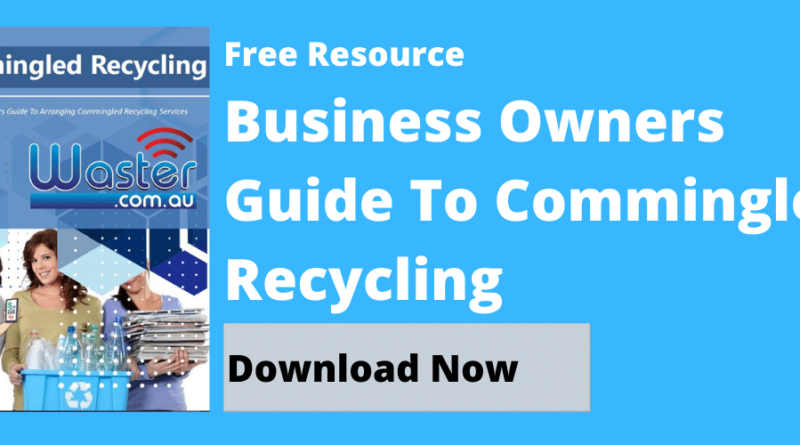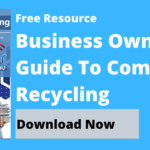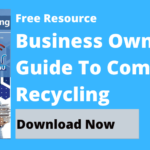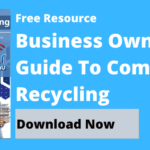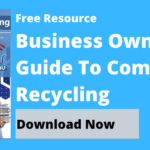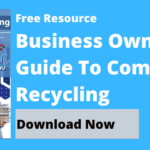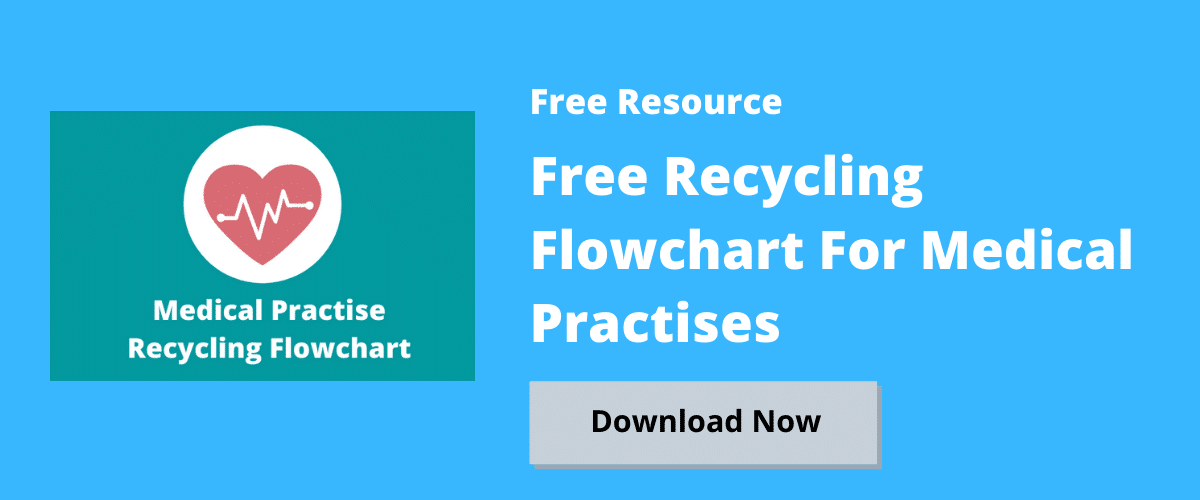We Dislike Microplastics! ♻️ Podcast Ep. 23 Don’t Be A Waster
Energy Disrupter
We Dislike Microplastics! ♻️ Podcast Ep. 23 Don’t Be A Waster
Listen on Apple Podcasts Listen on Spotify Listen on Google Podcasts Listen on Stitcher Listen on Amazon Music
Transcript: Why We Dislike Microplastics
Hello and welcome to another edition of Recycle: Don’t be a Waster or regular podcast on all things recycling and environment I suppose not mean to sound too negative but sometimes on our podcast we tend to talk an awful lot about plastic the negative aspects of plastic and things like that you know and it’s almost like that old the poster for jaws just when you thought it was safe to go back in the water and there’s another hidden lurking something wrong and it you know in this instance that is well sometimes it is hiding in the water and that is that is microplastics which you know it’s becoming more and more I suppose in the media we’re becoming aware of it like it’s something I don’t think I’d heard of said 10 years ago.
I don’t think it was something that people were really aware of generally and I think it’s thankfully there is some attention being put on it and when we are looking at it you know what are microplastics microplastics are like fundamentally you know we’re not going to get into the exact science the measurements etc. but really they are extremely small amounts of plastic that when larger amounts of plastic break down through friction or decay or whatever it is you know whether that’s a plastic bag breaking down decomposing.
[embedded content]
Whether it’s a plastic road with a car driving across and very many new pieces of plastic breaking off it whether it’s pieces of plastic in the ocean you know with waves smashing against it in tiny pieces similar to sand, but obviously smaller that you with that you know just over time it breaks down and that that is how plastic will break down it doesn’t you know go from a fully formed plastic bottle to no plastic bottle it goes from a fully formed plastic bottle to minuscule tiny amounts of plastic breaking off it and going into the environment.
And I suppose the big issue is we really do not know what this does there’s an old saying that out of sight out of mind and I think you know to some person in this instance it’s very pertinent when you can’t see that plastic waste anymore maybe we like to believe that it isn’t there but it is there and it’s so microscopic that it’s having impacts on all different aspects all different you know parts of life from I think we are aware in 2022 that pretty much all the fish in the sea pretty much all the sea life has consumed some aspect of plastic you know just I think we’ve covered in a previous podcast that a lot of sea life and even birds are attracted to are attracted to the colour and potentially the smell of plastic of, obviously, plastic is very bright colours in many instances and we have seen there is evidence that animals see life like to eat it the long-term repercussions.
Obviously, we know about turtles and straws and these sort of things but the consumption of microplastics is I suppose it’s a much more grey area you know you’re not going to end up in an emergency department or accident an emergency you know it’s not a traumatic injury but it’s potentially bad.
I’ll be honest I don’t know if it is I don’t know really you know what will happen over time but there is evidence that it leads to inflammation in animals you know I think we’re seeing we’re saying it moving up the food chain like realistically you know one animal consumes the plastic then it moves into the animal that consumes it and on up the food chain and you know I think we’d like to still think of ourselves as top of the food chain as humans and obviously that that’s the inevitable endpoint where this goes you know there is a lot of evidence we’ve seen in studies that products you know consumer products now have been shown to have trace elements of microscopic aspects of plastics we see them in salt and salt cellars you can buy in the supermarket we see them in canned goods you know I think we’ve seen them in bottled water.
Pretty much any product that you purchase will probably and again I’m saying probably there is a lot of evidence that it will through statistical studies and through different research that there will be aspects of plastic in those and then obviously when you consume that that will get into the human body and now we’re seeing the inevitable march of time and there’s evidence that humans there is there is microscopic aspects of microplastics in human bodies from the lungs to the ones I’ve seen of the lungs some of the internal organs and even the veins in the blood supply and you know realistically we do not know what that does we do not know the long-term repercussions of that, there is some suggestion that it could lead to inflammation.
I’ll not speculate on that too much but you know call me old-fashioned I would prefer not to have little tiny amounts of plastic floating around inside my bloodstream you know that’s just me maybe you’re different but I suppose that is where we are in 2022 that is the issue with microplastics and it’s you know if we’re saying what is the solution to it I’m going to be honest I don’t know I honestly I don’t have one I don’t have one to give you the plastic is already in the environment it has already broken down it is already and obviously we’re pumping more and more into it into the environment,.
Of course let’s not do that less that’s an easier solution let’s find ways to reduce that but if we’re actually talking about the plastic the microplastics that are currently already there already in the environment how do we deal with that look I don’t know and I don’t know if anybody knows I think you know the facts we have about plastic it breaks down into smaller pieces it lasts for the hundreds or thousands of years depending on the environment and the exact type of plastic, and you know, what is it made up from it is made up of, I suppose fundamentally petrochemicals – change through a chemical process into plastic and you know what does that do to the human body, again, uncertain.
So, like I suppose you know if I was if I was at a politician you know I was running in this Australian election in 2022 federal election you know what would I know an awful lot of people are running under climate change and environmental aspects and this sort of stuff but I haven’t heard anyone really talk about microplastics you know my suggestion what would I suggest my suggestion would be I think we need some research I think we need, like, I think it’s a pertinent enough question.
I think it’s important enough certainly with where we live on the most of us live on the ocean or near the ocean I think it’s at 90 per cent of the Australian population with it lives within you know 50 kilometres of the sea so it is it’s very pertinent to people in Australia and I think I think there should be more investigation I think certainly funding should go into looking at a what does it do to the human body b what does it do to plant and animal life sea life see how do we combat this issue how do we can we filter it can we you know what is the methodology is there do we have to is there need to do this and if so what should we do because, you know, I just think it’s one of those issues that I would prefer to have a better a better comment or a better opinion to give you than we don’t know, but I suppose at 2022 that is that is where we are.
We don’t know, you know, I think we I think we have to accept that the environment has led to a lot more autoimmune illnesses now than there used to be, I think. In the United States they show that issues such as asthma eczema or eczema however you pronounce it those sort of issues.
Even Crohn’s disease autoimmune issues like that are increasing in in prevalence all the time again the reasons for it there’s different arguments but is it atmospheric is it is it environmental pollution I again we don’t really know and I think this is just one other with this microplastic issue which is really growing it’s if you think about the proliferation of plastic it’s going to get bigger and bigger and bigger and you know as it takes so long to break down clearly the problem five years from now will be twice or three times or whatever it is from today. So now is the time to you know to really look into it you know that I suppose yes that’s what I would suggest let’s actually put together get some scientists together.
Let’s look at this issue let’s see if we can have practical solutions to it if those are necessary you know and then at least at that point if it’s something we don’t need to worry about you know what hey that’s fine that’s fine at that point but up to then I’m a big believer in having more info so that’s what I’ll leave it there today and this was actually I started thinking about this when I looked into the plastic roads which sounded like a great idea but then when you hit with the microplastic aspect, obviously through friction trucks etc. brakes on plastic road.
Inevitably, there will be microplastics released. And then we get into this scenario, so you know before we start heading off building, lots of plastic roads I think we should maybe look at this first another thing what we’ll do on these podcasts is. I think we’d like to share with our listeners some just interesting recycling projects into interesting recycling companies environmental companies that we’re aware of so you know if you operate a business like that or a project like that or anything like that really whether professionally, or you know, just on an amateur basis just reach out to us, you know – if it’s pertinent if it’s interesting to our listeners, you know we’ll give you a shout out so and you know we’ll try to do one on each episode if we if we can.
So the one today we would I could approach or I became aware of someone recently who is based in Newcastle new south Wales a lady called jess and they are running a business you can find them at resourcefulliving.com.au that’s resourcefulliving.com.edu and they’re based in Newcastle new south Wales just up the road from us here in Sydney and they are operating you know very interesting business making lovely products that I’m on their website lovely products made from basically from plastic a lot of its seeming seemingly you know ocean plastic or plastic that’s been dumped to recover from the from the from the ocean they make aspects such as tables here a side table made from 41 shampoo bottles serving boards and all these sort of things.
So it’s great to see people focusing on aspects like this the circular economy and we wish them the best and if you are in the market for any of these you know anything like that for your house your kitchen that’s environmentally friendly that also looks really nice you know I think it’s well worth checking out so once again that’s resourcefulliving.com and we will place that in the show notes so have a great day hopefully the weather picks up it’s pretty grim here at the moment in Sydney but I hope you all have a great week and a great weekend so once again our tagline is Recycle: Don’t be a Waster!
Editor’s note: Leave a comment if you have any questions about microplastics.


